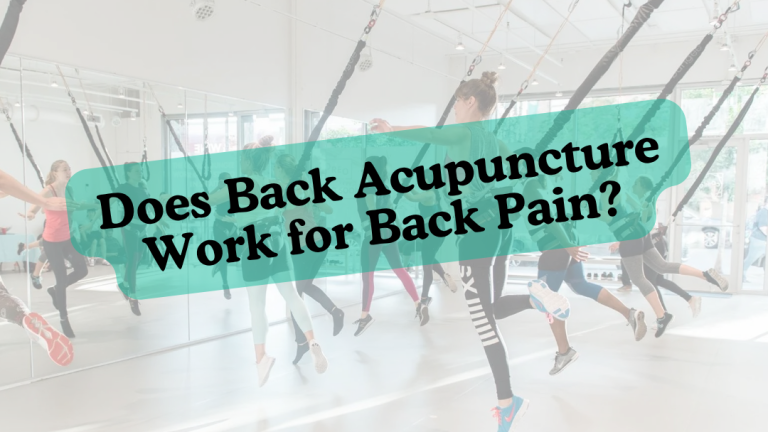Don’t Let Ankle Pain Lead to Surgery—Try This First
Ankle pain can interfere with even the simplest parts of daily life. Whether caused by a sports injury, repetitive strain, or a sudden accident, the discomfort can affect how you walk, rest, and move. Many people assume surgery is the only answer, but that isn’t always true. In many cases, non-surgical approaches and natural healing methods provide effective relief and long-term recovery.

This guide explains what happens when a tendon tears, what natural treatments are available, why surgery may not always be necessary, and how recovery without surgery can look. You’ll also find guidance on who may benefit from non-surgical care, when to seek medical attention, and the main points to keep in mind.
What Actually Happens When a Tendon Tears
Tendons are strong bands of tissue that connect muscles to bones. In the ankle, they keep the joint stable and allow for smooth movement. When a tendon tears, either partially or fully, several things can occur:
- Micro-tears or full rupture: Small tears may heal with rest and care, while a complete rupture is more severe and requires structured treatment.
- Swelling and inflammation: The body’s immediate response is to send blood and fluid to the injured area, leading to swelling.
- Weakness and instability: Torn tendons reduce support for the joint, making walking or weight-bearing difficult.
- Bruising and stiffness: Discoloration and limited movement are common as circulation increases around the injury.
It’s important to note that ankle pain from tendon damage isn’t always immediate. In some cases, discomfort builds gradually, especially in athletes or anyone with repetitive strain injuries. Recognizing these early warning signs can prevent a minor problem from becoming more serious.
Real Alternatives That Help You Heal Naturally
Not all ankle injuries require surgery. Many people find relief and recovery through non-invasive, natural approaches that restore strength and mobility. Some of the most effective options include:
- Rest and protection: Limiting activity and using braces or wraps helps reduce strain on the tendon.
- Physical therapy: Guided exercises improve strength, flexibility, and balance, supporting long-term recovery.
- Massage and soft tissue therapy: These methods increase circulation, ease stiffness, and reduce scar tissue.
- Nutritional support: A diet rich in collagen, vitamin C, and omega-3 fatty acids supports tendon repair.
- Herbal remedies and supplements: Natural anti-inflammatories such as turmeric, ginger, and boswellia may ease swelling and discomfort.
- Cold and heat therapy: Alternating ice and warm compresses reduces inflammation and encourages healing.
These approaches not only reduce pain but also strengthen the ankle, lowering the risk of re-injury in the future.
Why Surgery Might Not Be the Right Call
Surgery is sometimes necessary, but it’s not always the best first step. There are several reasons to consider alternatives:
- Complications: Surgery carries risks such as infection, nerve damage, or delayed healing.
- Extended recovery: Surgical repair often requires weeks or months of rehabilitation.
- Scar tissue formation: Post-surgical healing can lead to stiffness and reduced flexibility.
- Cost: Both surgery and the rehabilitation that follows can be expensive.
- Uncertain results: Not every patient regains full mobility, especially if rehabilitation is incomplete.
For many individuals, especially those with partial tears or chronic overuse injuries, non-surgical options provide a safer and more sustainable path to recovery.
What Recovery Without Surgery Can Look Like
Healing without surgery is a gradual process, but it often leads to stable, long-term results. A typical recovery might progress as follows:
- Weeks 1–4: Rest, light support, and gentle movement to control swelling and ease pain.
- Weeks 4–8: Gradual introduction of strengthening exercises for the ankle and surrounding muscles.
- Months 3–6: Balance and coordination training, with low-impact activities like yoga or Pilates added back in.
- After 6 months: With consistent care, many people return to normal activities, sports, and exercise without major restrictions.
This approach allows the body to heal naturally, often leaving the tendon stronger and less prone to re-injury compared with surgical repair.
Who Should Try These Non-Surgical Options?
Not everyone requires surgery to recover from ankle pain. Non-surgical care may be a good option for:
- Partial tendon tears: Small injuries usually heal well with rest, therapy, and structured rehabilitation.
- Chronic overuse injuries: Pain from repetitive strain often improves with strengthening and mobility work.
- Patients concerned about surgical risks: Anyone wary of complications may prefer natural approaches first.
- Older adults: Surgery can carry additional risks in older patients, making conservative care safer.
- Athletes focused on long-term health: Many athletes now prioritize structured recovery programs unless surgery is absolutely necessary.
A healthcare professional can evaluate the severity of the injury and recommend the most appropriate treatment.
When to Take Action
While many ankle injuries improve with time and proper care, delaying treatment can cause long-term problems. You should seek medical advice if you experience:
- Ongoing or worsening pain that does not improve with rest
- Difficulty bearing weight on the injured ankle
- A sudden “pop” at the time of injury, followed by sharp pain
- Severe swelling and bruising that limit movement
- Recurrent ankle injuries
Prompt evaluation helps prevent small injuries from developing into complete tendon ruptures. Even if you pursue non-surgical healing, early action gives you the best chance of full recovery.
Key Points to Remember
- Ankle pain often results from tendon tears, inflammation, or repetitive strain.
- Many natural and non-surgical methods—such as therapy, nutrition, and rest—support recovery.
- Surgery carries risks and isn’t always required for healing.
- Non-surgical recovery takes time but often results in stronger, more resilient tendons.
- These options are especially helpful for partial tears, chronic pain, and patients who want to avoid surgery.
- Early evaluation is critical to prevent long-term damage.
Final Thoughts
Ankle pain can be discouraging, but it doesn’t always mean surgery is necessary. By understanding tendon injuries and exploring non-surgical care, you can make informed choices about your treatment. For many, natural healing methods provide lasting relief, improved stability, and a return to normal activities without invasive procedures.
If you’re experiencing ankle pain, consult a medical professional about your options. With the right care and a structured recovery plan, your body has an impressive ability to heal and restore strength.






